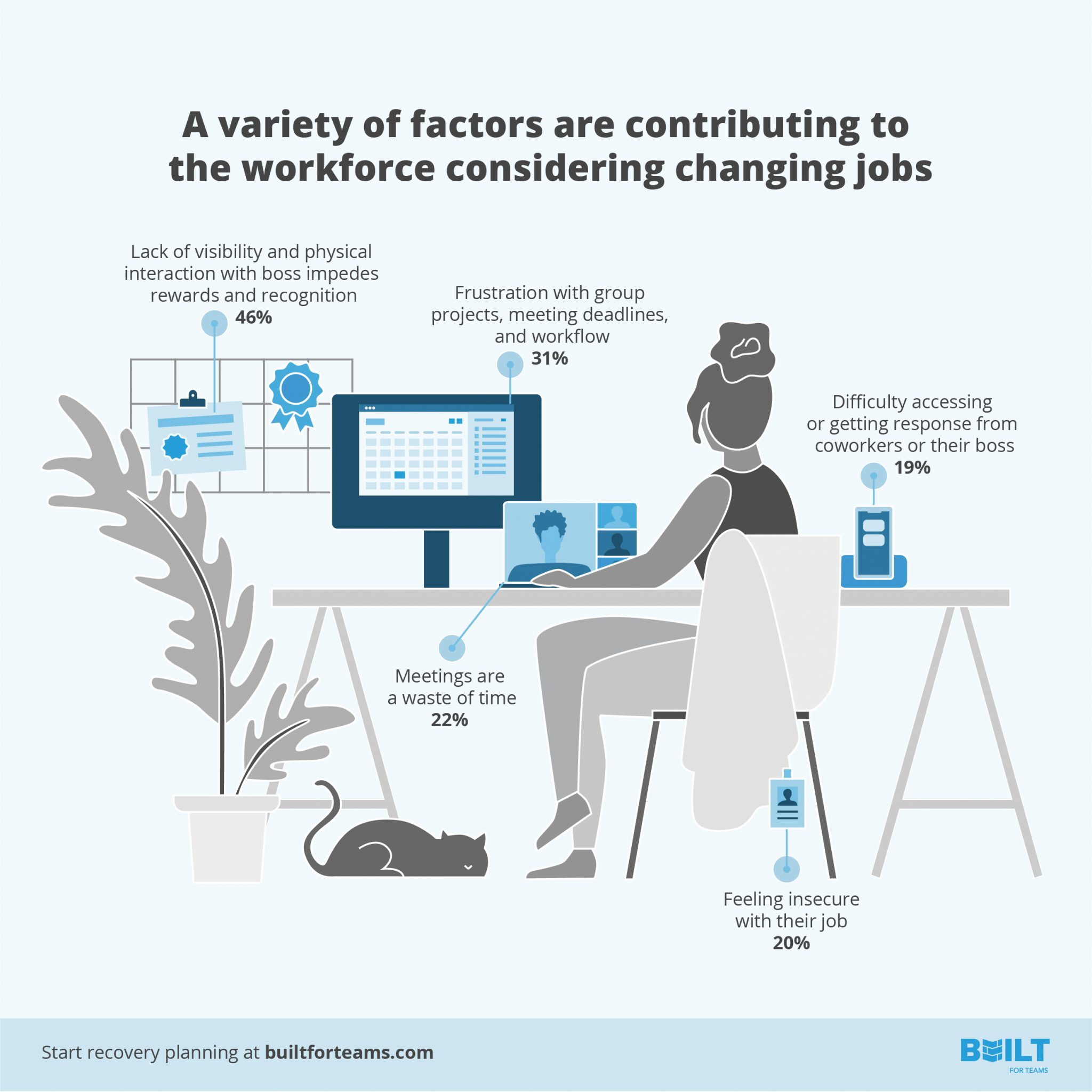 Brett Derricott
Brett Derricott
With millions unemployed around the world, your employees are grateful to have a job and wouldn’t dream of leaving, right? We recently surveyed thousands of US workers and the results suggest otherwise.
Why would an employee consider a job change during a pandemic when so many things are economically uncertain? A few of the key reasons, as reported to us by survey recipients, are highlighted in this infographic:

Clearly US workers are experiencing a lot of emotions right now. For a large percentage of those workers, the situation is leading them to consider whether a change of employment would be best.
As discouraging as that may be to hear, all hope is not lost. There are things you can do to minimize the risks of employees leaving unnecessarily and handle the impact if they do go. Here are four suggestions:
First, anxiety and fear are often a result of not knowing things. Your employees may wonder how the business is doing, how safe their job is, what actions the company is taking to stay healthy, etc. To the degree possible, communicate openly with your employees and do your best to remove ambiguity and uncertainty. Transparent communication does wonders to ease anxiety even if some of what you share isn’t necessarily good news. Just knowing is extremely helpful and saves the employee from trying to guess.
Second, identify the key people within your organization. Make a list and then work on documenting their job requirements and duties. Do you know what systems your key people use? Do they take care of things that you may not realize they are doing? By documenting all of this now, you minimize the pain felt if one of those people does leave the company.
Third, consider posting job openings now for positions where you think you might need to hire quickly if someone does leave. If having that job open will be confusing for existing employees, simply let them know you are trying to make connections with possible future employees now, but that you aren’t trying to replace anyone. Waiting until you need to start looking is a sure way to make the process feel a whole lot more stressful.
And fourth, consider ways you could streamline your operations by using software, contractors, or other ways of getting things done if a person leaves. Although it’s unpleasant to lose key employees, try to use this as an opportunity to critically analyze that role and figure out if you do need to hire someone. If you decide you do, take advantage of the opportunity to retool the position if there are beneficial changes that could be made.
In future blog posts we’ll share more insights from this valuable survey data!
